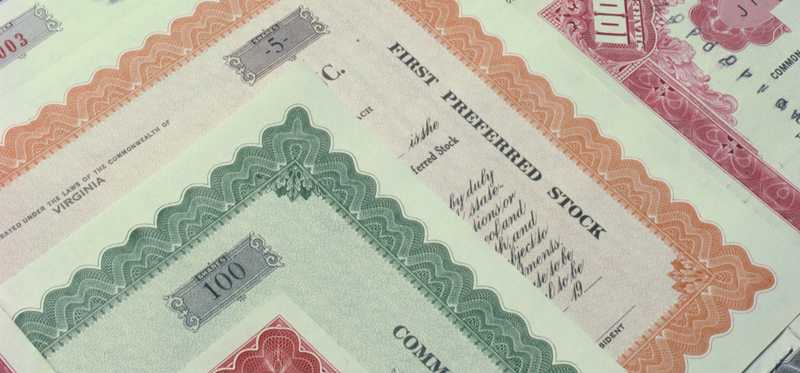12 Steps to a Million-Dollar 401(k)

12 Steps to a Million-Dollar 401(k)
Where there's a will there's a way
Just about anyone who's ever had a less-than-perfect job has dreamed about the possibility of retiring early. When you're just starting out in your career, 50 seems really old, but retiring at 50 gives you a realistic chance at 30 to 50 years of retirement living. It takes a lot of effort to put yourself in position financially to retire that early.
As hard as it is, retiring early isn't impossible, and the sooner you get started planning for it, the more likely you are to achieve it. Follow these strategies, and you'll give yourself the best shot possible at quitting by 50.
ALSO READ: Nearly 66% of Savers Are Making This Smart 401(k) Move
Previous
Next

1. Take care of bad debt
Most people have at least some debt when they're first starting out in their careers, and that's not always a bad thing. Debt like a home mortgage or federal student loans usually comes with relatively low interest rates and terms that let you pay off your balance comfortably over time. But if you have credit card debt or other high-interest obligations, making a plan to get that bad debt paid off sooner rather than later is a vital first step toward a million-dollar retirement.
Previous
Next

2. Set up an emergency fund
Once you've taken care of bad debt, it's important to have a source of funds for the unplanned expenses that inevitably come up. In the long run, having three to six months' worth of expenses in an emergency fund can help you avoid financial catastrophes if you suddenly lose your job or become disabled. You don't have to save that much before starting to build up your 401(k), but having at least enough to cover an unexpected car or home repair bill will keep you from having to start carrying a credit card balance and pay large finance charges.
Previous
Next

3. Get a job with benefits
Not all jobs offer 401(k) or similar plans. IRAs and other types of retirement savings accounts are available, but with lower contribution limits, it's harder to reach your financial goals solely with IRAs than it is if you have a 401(k). Your ideal employer will offer a 401(k) with both regular and Roth options and a healthy employer match, along with good investment options at your disposal.
Previous
Next

4. Don't settle for the default
Many employers now offer automatic enrollment into their 401(k) plans. That ensures that new workers always participate unless they specifically opt out, but the amount that the default option has new workers save is typically small -- often just 3%. That's not enough to get you to $1 million, so take the extra step to boost your 401(k) contribution percentage above the default amount.
Previous
Next

5. Get the biggest match you can
One of the best features of great 401(k) plans is when employers make matching contributions to supplement your own retirement saving. Most employers set a limit on the amount they'll match, such as making a dollar-for-dollar deposit up to the first 6% of your salary. If at all possible, saving enough to get the full amount your employer is willing to match is the best way to capture all the free money you can get.
Previous
Next

6. Pick high-growth investments
401(k) plans typically offer menus of investment options, including a range of aggressive and conservative choices. As long as you're further than 10 years away from retiring, choosing higher-return options like stock mutual funds or ETFs is worth the risk. You'll never reach $1 million by sticking with ultra-safe low-return investments, and when time's on your side, you can deal with the volatility of aggressive investment options in order to capture the growth they offer.
Previous
Next

7. Use tax breaks to your advantage
401(k)s that offer both traditional and Roth options give you the flexibility to consider your tax situation. Early in your career when you're in a low tax bracket, a Roth 401(k) is often the better choice, as the tax-free withdrawals a Roth offers in retirement are worth more than immediate tax savings. Later on as your earnings rise and you climb into higher tax brackets, traditional 401(k) contributions can save you more in taxes upfront. In the end, a mix of Roth and traditional retirement accounts is an ideal way to build a nest egg.
Previous
Next

8. Share your raises with your 401(k)
To get to $1 million, the best thing to do is to gradually increase your contributions to your 401(k) over time. One painless way to do so is to boost your contribution percentage whenever you get a raise. By doing so, you'll be able to set more money aside while still seeing your paycheck grow. For many, that's a key psychological lift that will keep you focused on your long-term goals without feeling like you're making too big a sacrifice now.
Previous
Next

9. Avoid raiding your retirement savings
The worst thing you can do with your 401(k) is to use it for purposes other than retirement. When you switch jobs, never withdraw a 401(k) balance outright, and instead, roll it over into your new employer's 401(k) or an IRA to keep it intact. 401(k) loans aren't quite as bad, but the consequences when things go wrong can be just as bad for your retirement aspirations. By avoiding loans and early withdrawals, you'll give yourself the best chance to reach the $1 million mark.
Previous
Next

10. Catch up when you can
Contribution limits on 401(k)s are extremely high, at $18,500 for 2018. But when you turn 50, you get an opportunity to make an additional catch-up contribution of up to $6,000 more into your 401(k). By that time in your career, the chance to boost your total retirement savings can be timely and valuable in helping you reach your end goals.
Previous
Next

11. Replace investments that aren't getting the job done
You shouldn't micromanage your 401(k) investments, treating them as long-term choices that will pan out over time. Yet that doesn't mean you should ignore your retirement savings entirely. Sometimes, your 401(k) might have an investment that doesn't perform the way it should, and in that case, making a switch will help you stay on track toward getting the growth you need to build up your nest egg.
Previous
Next

12. Make a tax-smart plan for your retirement withdrawals
Even once you reach the $1 million mark in your 401(k), your job isn't done. With traditional 401(k)s, withdrawals will be subject to income tax, meaning that taking the entire amount out in one lump sum will push you into the highest possible tax bracket. Instead, be prudent about taking distributions over time in order to keep your taxes low. That way, you'll get your full money's worth from your million-dollar retirement savings.
Previous
Next

You can get to $1 million
It might seem crazy to think that anyone could retire with $1 million in savings in a 401(k). But by starting early and following these 12 steps, you'll put yourself in the best possible position to get the financially secure retirement you've always wanted.
The Motley Fool has a disclosure policy.
Previous
Next
Invest Smarter with The Motley Fool
Join Over Half a Million Premium Members Receiving…
- New Stock Picks Each Month
- Detailed Analysis of Companies
- Model Portfolios
- Live Streaming During Market Hours
- And Much More
READ MORE
HOW THE MOTLEY FOOL CAN HELP YOU
-
Premium Investing Guidance
Market beating stocks from our award-winning service
-
The Daily Upside Newsletter
Investment news and high-quality insights delivered straight to your inbox
-
Get Started Investing
You can do it. Successful investing in just a few steps
-
Win at Retirement
Secrets and strategies for the post-work life you want.
-
Find a Broker
Find the right brokerage account for you.
-
Listen to our Podcasts
Hear our experts take on stocks, the market, and how to invest.
Premium Investing Services
Invest better with The Motley Fool. Get stock recommendations, portfolio guidance, and more from The Motley Fool's premium services.